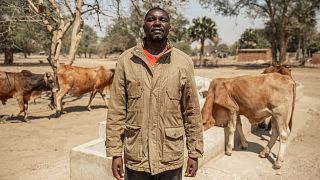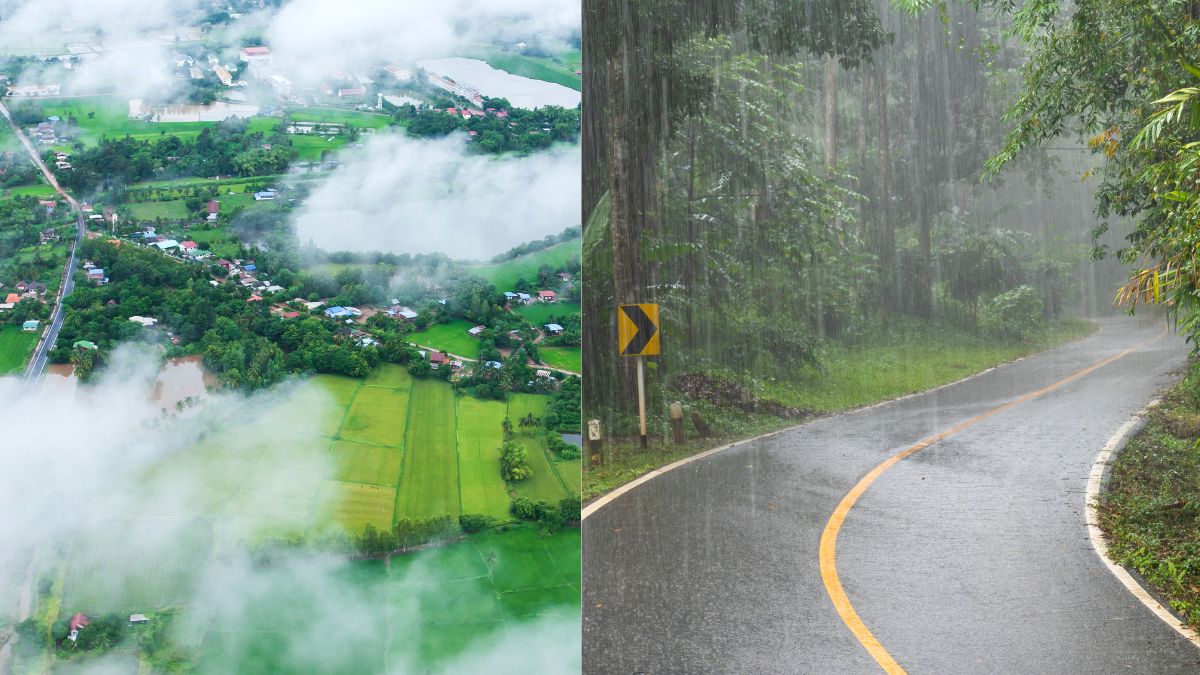New Report Highlights Dangerous Climate Whiplash Impacts On Global Cities

Table of Contents
Increased Frequency and Intensity of Extreme Weather Events
Climate whiplash, characterized by rapid and unpredictable shifts in weather patterns, is leading to a surge in the frequency and intensity of extreme weather events in urban areas. This poses significant challenges to urban resilience and necessitates immediate action.
Heatwaves and Droughts
Prolonged periods of intense heat, often followed by sudden, heavy rainfall, are becoming increasingly common. This creates a stressful environment for urban infrastructure and public health.
- Examples of cities severely impacted: Los Angeles (heatwaves and wildfires), London (extreme heat and drought), Sydney (severe heat and bushfires).
- Increased mortality rates due to heatstroke: Heatwaves are directly linked to increased mortality rates, particularly among vulnerable populations like the elderly and children. The sudden shifts in temperature also place strain on the cardiovascular system.
- Damage to water supplies: Droughts reduce water availability, stressing water resources and impacting sanitation systems. This can lead to water shortages and increased conflict over water allocation.
- Wildfires: Prolonged droughts create tinderbox conditions, increasing the risk of devastating wildfires in and around urban areas.
Flash Floods and Storm Surges
Rapid shifts in weather patterns contribute to catastrophic flooding events. Intense rainfall overwhelms drainage systems, leading to widespread damage and disruption. Coastal cities are particularly vulnerable to storm surges exacerbated by rising sea levels.
- Examples of coastal cities vulnerable to storm surges: Miami, New York City, Shanghai, Venice.
- Increased risk of waterborne diseases: Stagnant floodwaters create breeding grounds for disease-carrying mosquitoes and bacteria, leading to outbreaks of waterborne illnesses.
- Economic losses from flooding: Flooding causes significant economic losses due to property damage, business disruption, and the cost of cleanup and recovery.
Impacts on Urban Infrastructure
The unpredictable nature of climate whiplash events puts immense strain on urban infrastructure. Transportation networks, power grids, and sewage systems are particularly vulnerable.
- Cost of repairing damaged infrastructure: Repairing damaged infrastructure after extreme weather events is incredibly expensive, placing a burden on already strained municipal budgets.
- Disruption of essential services: Power outages, transportation disruptions, and water shortages severely impact essential services, causing widespread inconvenience and even hardship.
- Increased vulnerability to future events: Damage to infrastructure increases a city's vulnerability to future climate whiplash events, creating a vicious cycle of damage and repair.
Challenges to Public Health and Wellbeing
The consequences of climate whiplash extend far beyond infrastructure damage. The effects on public health and wellbeing are profound and far-reaching.
Heat-Related Illnesses and Mortality
Extreme heatwaves, intensified by climate whiplash, are driving up rates of heat-related illnesses and deaths.
- Vulnerable populations (elderly, children): Elderly individuals and young children are particularly vulnerable to heatstroke and other heat-related conditions.
- Strategies for heatwave mitigation in urban areas: Implementing green infrastructure, improving urban planning, and public awareness campaigns are crucial for heatwave mitigation.
- Public health interventions: Early warning systems, access to cooling centers, and public health education can significantly reduce heat-related illnesses and deaths.
Mental Health Impacts
The frequent and intense extreme weather events associated with climate whiplash have significant psychological effects on urban populations.
- Increased anxiety and stress: The constant threat of extreme weather events can lead to increased anxiety, stress, and feelings of helplessness.
- Displacement and trauma: Extreme weather events can cause displacement and trauma, particularly for those who lose their homes or businesses.
- Long-term mental health consequences: The cumulative effects of repeated exposure to extreme weather events can have lasting impacts on mental health.
Spread of Infectious Diseases
Climate whiplash creates conditions favorable to the spread of infectious diseases.
- Waterborne diseases: Floodwaters contaminated with sewage can spread waterborne diseases like cholera and typhoid fever.
- Vector-borne diseases: Changes in temperature and rainfall can alter the ranges of disease-carrying mosquitoes and ticks, increasing the risk of vector-borne illnesses like Zika and Lyme disease.
- Impact on sanitation systems: Damage to sanitation systems can increase the risk of disease outbreaks.
Economic Consequences and Societal Disruptions
Climate whiplash has profound economic consequences and widespread societal disruptions for global cities.
Damage to Property and Infrastructure
The cost of repairing damaged infrastructure and replacing lost property after climate whiplash events is staggering.
- Insurance claims: Insurance companies face massive payouts for damage caused by extreme weather events.
- Government spending on disaster relief: Governments bear the significant cost of disaster relief and recovery efforts.
- Long-term economic impacts on cities: Repeated extreme weather events can have long-term negative impacts on a city’s economic growth and development.
Disruption to Businesses and Supply Chains
Extreme weather events severely disrupt businesses and supply chains, causing widespread economic hardship.
- Business closures: Businesses can be forced to close temporarily or permanently due to damage or disruptions.
- Supply chain disruptions: Extreme weather events can disrupt supply chains, leading to shortages of goods and services.
- Job losses: Businesses may be forced to lay off employees due to financial losses caused by extreme weather events.
- Reduced productivity: Disruptions to transportation and other essential services can reduce worker productivity.
Social Inequality and Displacement
Climate whiplash disproportionately impacts vulnerable populations, exacerbating existing social inequalities and leading to displacement.
- Low-income communities: Low-income communities are often more vulnerable to the impacts of climate whiplash due to inadequate housing, lack of resources, and limited access to insurance.
- Marginalized groups: Marginalized groups often face additional barriers to recovery after extreme weather events.
- Access to resources and support: Access to resources and support services is crucial for vulnerable populations to cope with and recover from climate whiplash events.
Conclusion
This report clearly demonstrates the dangerous climate whiplash impacts on global cities. The increased frequency and intensity of extreme weather events are causing widespread damage to infrastructure, severe disruptions to economies, and significant threats to public health and wellbeing. The economic costs are substantial, and the social consequences are far-reaching, particularly for vulnerable populations. Understanding the dangerous implications of climate whiplash impacts is crucial for building more resilient and sustainable global cities. Learn more about how you can contribute to climate action and protect your community from the effects of extreme weather events. Investing in urban adaptation and mitigation strategies is no longer optional; it is essential for the future of our cities.

Featured Posts
-
 Nadals Last Roland Garros Sabalenka Secures The Title
May 28, 2025
Nadals Last Roland Garros Sabalenka Secures The Title
May 28, 2025 -
 Jadwal Kapal Pelni Km Lambelu Terbaru Nunukan Makassar Sampai 25 Juni 2025
May 28, 2025
Jadwal Kapal Pelni Km Lambelu Terbaru Nunukan Makassar Sampai 25 Juni 2025
May 28, 2025 -
 Taylor Swift And Beyonce 2025 American Music Award Nominations
May 28, 2025
Taylor Swift And Beyonce 2025 American Music Award Nominations
May 28, 2025 -
 Stowers Two Homer Game Leads Marlins Victory Over Cubs
May 28, 2025
Stowers Two Homer Game Leads Marlins Victory Over Cubs
May 28, 2025 -
 Understanding Increased Rainfall In Western Massachusetts A Climate Change Perspective
May 28, 2025
Understanding Increased Rainfall In Western Massachusetts A Climate Change Perspective
May 28, 2025
